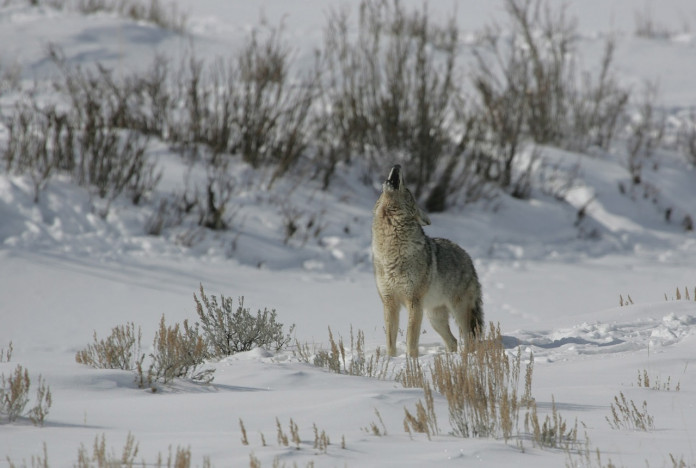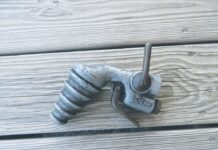And then there were coyotes, make that then there ARE coyotes, lots of them, behind every tree it seems, in towns, on farms, in parks, and well, just everywhere.
Indeed, Ohio is now home to a zillion more or less, of these sneaky critter killing machines.
Yotes, as some call them, song dogs as still others call them, these secretive survivors of the ages are fast becoming the favorite prey for all-seasons hunters who pursue them with all sort of strategies, gear and tricks.
Tricks
You can certainly use every kind of trick, every kind of strategy, and every kind of gadget but what it really comes down to is three things according to master coyote hunter Scott Peters; patience, persistence and confidence.
The patience and persistence pieces fall into place when a hunter develops enough skills and realizes enough success to be confident about what, where, and how he or she is approaching each and every set.
A set, explained Peters, is somewhat like a blind is to a duck, deer or turkey hunter. Maybe it ought to be called a sit since that’s exactly what it is, a hunker-down spot to look for coyotes, call to them, or listen for them.
Peters, Division of Wildlife’s wildlife management supervisor for much of northeast Ohio, walks and talks a solid coyote story because he has earned the attributes of patience, persistence and confidence by logging hundreds of dead coyotes.
Peters said that if you think that you can rid or eradicate coyotes from an area you better think again.
“That is an unrealistic goal,” he said, adding that reducing the number of coyotes in an area is doable.
Peters said that the coyotes can be hunted successfully year around, but the next two months are without argument, prime time.
Breeding season
February and March are the best two months because it is breeding season. Coyotes are busy, aggressive, and more apt to respond to the right sounds now.
Alpha males are protecting their space while roaming males are on the move searching for a mate. That alone creates the potential for aggressive and vocal behaviors.
A simple howl may be all it takes to locate and bring in a bristling coyote that is itching for a fight.
Calling is the most affective and exciting method of hunting ‘yotes, Peters said. But, he cautioned that effective calling involves a lot more than simply turning on an electronic call.
The tendency for beginners is to turn the volume to the highest setting in hopes that a distant coyote will hear it.
They will indeed hear it but, says Peters, it may scare them and in effect, warn them that something isn’t right.
Patience
Best calling results will come when a hunter starts the set with a subtle teaser, something that might coax a nearby coyote.
He then suggests that smart calling means applying a gentle increase in volume, maybe a change in distressed critter sounds, and most importantly, several rest periods of silence mixed in.
Peters instructs beginners to be patient but to not stay at a set more than about a half hour. He also said that if a coyote is spotted it’s important to turn down the noise, possible switching to the squeak of a small rodent or bird.
The best time of day is anytime one has available but the period of first light and last light are always the best since coyotes are generally night hunters.
Peter’s favorite time is first light. “That’s when I hope to call to the coyote that wasn’t successful during the night and is hungry,” he said.













